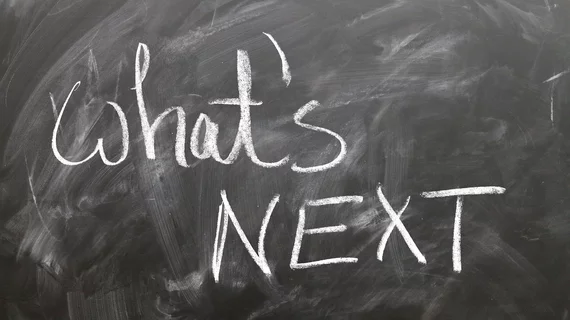5 recent developments in thoracic imaging and what they may portend for radiology at large
Recent years have seen the venerable chest X-ray built upon with new technologies, maturing screening programs and innovative educational techniques. As a result, today’s thoracic imaging may be a humble herald of things to come across radiology.
As put by two radiology scholars subspecialized in thoracic diagnostics:
The standard radiograph remained the mainstay of chest imaging for almost 80 years until the advent of CT, MRI and PET imaging. Subsequent advances have resulted not only in the qualitative improvement of images but the ability to provide functional data and enable quantitative assessment. Ultimately, the goal is to allow for more accurate diagnosis and better treatment for our patients.”
The authors are Theresa McLoud, MD, of Massachusetts General Hospital and Brent Little, MD, of Mayo Clinic Florida. Radiology published their reflective and prognostic think piece Jan. 17.
The article [1] breaks out the “top 10 developments and future trends” the two see unfolding inside their clinical and academic concentration. Among the 10 are these five:
1. AI will play an increasing role in characterizing cancer and other complex pathologic conditions.
The COVID-19 pandemic drove much new research into AI helps for finely diagnosing infectious diseases, McLoud and Little note. Numerous algorithms emerged to diagnose and grade pneumonia alone, they point out. “Such advances are likely to catalyze further developments in AI analysis of thoracic infection,” the authors write. “Many algorithms designed to detect pulmonary tuberculosis are already in use. AI algorithms hold promise in the identification, characterization, severity grading and clinical prognostication of interstitial lung disease.”
2. Improved AI algorithms and workflow integration will allow quantitative data integration into routine chest CT reporting, especially with “opportunistic screening.”
Automated quantification of a wide range of biomarkers “may become standard, with AI-driven comparison of patient biomarkers to population normal ranges using nomograms,” McLoud and Little write. “Routine incorporation of quantitative measures of disease and prediction of prognostic probabilities with quantitative CT and radiomics are likely to become central to daily practice as algorithms are refined and integration with picture archiving and communication systems and reporting systems improves.”
3. With photon-counting detector CT and MRI, hardware innovations will create new applications and refine existing clinical practice.
Photon-counting CT converts photons into electronic pulses to improve spatial resolution while reducing noise as well as radiation dose, the authors remind. The capabilities of the burgeoning technology “exceed those of current dual-energy CT scanners, offering the ability to reconstruct images retrospectively at a variety of photon energies,” McLoud and Little note. “This has applications for metallic and beam-hardening artifact reduction, perfusion imaging, and radiation and intravenous contrast material dose savings.”
4. Broader utilization of low-dose CT for lung cancer screening is limited by the lack of screening guidelines, lack of patient education on the benefits of screening, and the need to decrease the number of false-positive findings.
On the latter point, the authors point out that more than 90% of lesions detected with CT end up as false positive—but not until patients have had additional (and unnecessary) imaging and, sometimes, invasive procedures such as biopsy. “In the future, advanced imaging techniques such as MRI, dual-energy CT, CT perfusion and AI may further help accurately classify nodules as benign or malignant,” McLoud and Little suggest. “Concurrent use of low-dose CT with biomarkers could reduce the rate of false-positive findings while maintaining the sensitivity of CT.”
5. There is a global shortage of radiologists, and the recruitment of fellowship trainees for the specialty of thoracic radiology remains a significant challenge.
As Congress works on ways to increase the number of Medicare-supported residency positions in all specialties, radiology “should be given some degree of preference,” McLoud and Little assert. “Another approach is to increase the pipeline by recruiting more medical students to radiology. This requires exposure to radiology early in medical school with interactive sessions in both diagnostic and interventional radiology.” Meanwhile, they lament the persistence of the 25% figure for the share of radiology residents who are women. “Disinformation from student advisers about our specialty may be an important factor and needs attention.”
McLoud and Little encourage today’s radiologists to see their role as unique within, but inextricable from, our system of healthcare delivery as a whole:
Both now and in the future, the value of thoracic radiology can be enhanced by contributing to the multidisciplinary approach to patient management. Examples would include active involvement in thoracic oncology clinics, lung cancer screening and/or nodule clinics, and interstitial lung disease management decisions.”
RSNA has posted the commentary in full for free.

